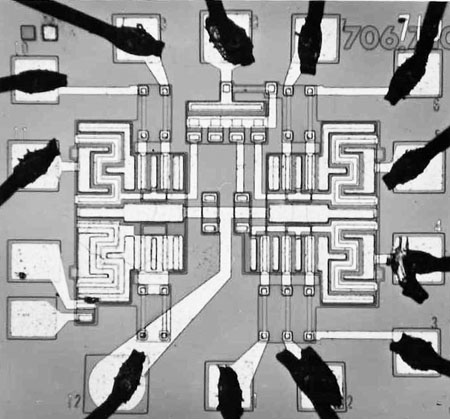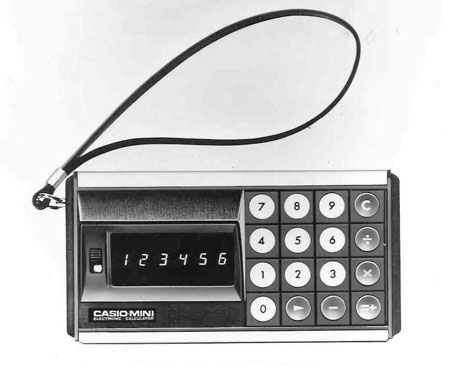9) Hitachi - The Trailblazer in MOS IC

Picture A: The chip pattern of Hitachi’s first MOS IC, [HD700 Series]

Picture B: The world’s first one-chip LSI calculator developed by Casio, called
[Casio Mini]
The application of MOS IC’s had been keeping pace with bipolar
IC’s, and the company at the front was
Hitachi.
The key person who drove the Hitachi’s activity was Minoru Ohno (later to
become President of Hitachi ULSI Engineering Company) who was regarded to
be one of the leading engineers in MOS device development, comparable with
RCA group. He presented his findings at the April and October Conferences
of Institute of Electric Communications in Japan ( later IEICE) in 1963.
When asked about the future of MOS, Ohno answered, “If the bipolar IC were
to be cooked rice, the MOS IC would be ramen.” The reliability of MOS technologies
at the time was still lacking, and to add to that negativity, Tohoku University
professor Junichi Nishizawa argued in the March 1969 issue of “Denshi-Gijutsu
(Electronic Technology)” magazine that “MOS is like Lady Lorelei to send us
to our possible dooms.”
While confronting the MOS problems, Hitachi released the first-generation
P-channel MOS IC, [HD700 Series]. It was developed for the rapidly growing
calculator application at the time, and the line width was 15μm. Picture A
shows the chip pattern of it.
The evolution process of IC calculators went from bipolar to MOS, and from
MOS IC to LSI. In doing so, Casio’s [Casio Mini] became the world’s first
one-chip LSI calculator.
Hitachi was the first company to provide the LSI, and was soon followed by
NEC.
The demand for calculators supported Japan’s IC industry, while on the other
hand, the American market was led by munitions and military. (Provided by
Minoru Ohno)
| To page top | To Part 2 index |